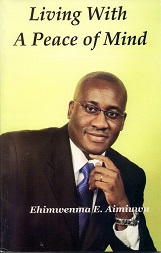 |
|
This list of cultural correspondence between African
and Egyptian culture is preliminary and due for expansion. Much of the material
is taken from J.O. Lucas' Religions in West Africa and Ancient Egypt, 1970,
Nigerian National Press. Contributions to this list are encouraged.
1. Similarity of Nigerian bronze work related to
the Oni (Ife ruler) with that found in ancient Egypt.
2. Similarity of the root word for the Supreme God, or another deity or idol,
in many West African countries (e.g., Orisa, Orise, Olisa, Lisa, Leza, Arusi,
Aruosa, Alusi, etc.) with the Egyptian god, Horu-sa-ast.
3. A Supreme God is recognized but local deities and ancestors are worshipped.
4. Egyptian gods have survived in name and/or attribute in West Africa. These
include Osiris, Ra, AMen, Ptah, Min and Horus.
5. Similar concepts on divine kingship.
6. Ideas relating to life after death. Practice of making provision for this
life, and of the concepts of Ka and Khu.
7. Ideas related tot he pig and other sacred animals, festivals, dancing, singing
and efficacy of offerings. The survival of the Mock King of ancient Egypt.
8. Similar ideas concerning magic and magical practices. Related types of amulets
are found. The amulet of the head-rest in ancient Egypt survives in the Sika
Gua "Golden Stool," of the Ashantis and other emblems of the West. Khnum, the
potter god of Egypt survives as Khnum "Creator God, a Potter," in West Africa.
Headrest from tomb of Tutankhamom (http://www.tulane.edu/lester/images/Ancient.World/Egypt/A86.gif)
9. The following religious practices show resemblances:
1) places of worship
2)services in groves and shrines
3)lustrations
4) use of music
5) training for prieshood
6) priest and their functions
7) dedicated objects and
8) oracles.
|
|
The Political & Spiritual Purpose of the
Holy Land
 |
| |
|
Specifically noteworthy are the performance of
mystery plays similar to those at Abydos, the wearing of the leopard's skin
by the Chief Priest, and the "templum" idea.
10. Circumcision, including female circumcision.
11. Excision.
12. Piercing of ears and nose and tatooing.
13. Shaving as a restriction of the priest.
14. The funeral practice of dismembering and unfleshing the body.
15. The practice of skull or heart removal of the corpse and wrapping the body
in cloth as in the Egyptian practice of mummification.
16. The survival of metal, stone, glaze and glass, and pottery work resembling
that of dynastic Egypt.
17. The four-day, eight-day and sixteen-day weeks are based on Egyptian ideas.
The seven day week is a survival of the udjat of the full moon, or division
of the fortnight into two periods.
18. The recognition of the helical rising of Sirius among the Dogon.
19. Similar numeration systems and names of numbers.
20. Practices of salutation, respect for elders, oaths, moderation and moral
maxims. 21. The role of names as "constituting an integral part of the human
economy, is the same in West Africa as it was in Ancient Egypt."
22. Survival of names of deities, animals, places, etc., as in Danga, the name
of dwarfs in ancient Egypt, among the Yoruba, e.g. lo bi danga "go as quickly
as a Danga dwarf."
23. The use of sacred numbers including 2, 4, 7, 9, 27, 42, 75, 77, 110, etc.
For example, the 42 day Adae ceremomy of the Ashanti, and the 27 divinites of
the Woyo cosmic order.
24. The practice of going naked, especially among children in both pre-dynastic
and dynastic times.
25. Going barefoot rather than wearing sandals.
26. The use of emblems and hieroglyphic symbols with meanings similar to those
found in Egypt. See Religions in West Africa and Ancient Egypt for an extensive
study of these emblems.
27. The Egyptian motto, "Life, health, well-being," (ankh, uza, seneb) is the
core of the Egyptian philosophical outlook. In one of the most astounding correspondences,
the widespread West African motto, "Life, health, strength," is as important
local thinking as it was in Egypt.
28. Use of similar types of combs.
29. Use of "Nubian" wigs in both regions. Use of similar braided wigs.
30. Greeting each other by making a low bow and droping one hand to the knee.
Young men stepping aside to make room for seniors. (Gloria Emeagwali)
31. Women pass water standing up, men sitting down. (Gloria Emeagwali)
32. Similar types of leather shoe design. (Gloria Emeagwali)
33. From Budge's Osiris, and the Egyptian resurrection (Gloria Emeagwali):
1. marriage p.212
2. respect for the aged, p.216
3. circumcision, p.219
4. snake worship,p.236
5. the crocodile, p.238
6. names,p.242
7. figures and counting, p.246
8. the head-rest,p252
9. the underworld,p.253
10. red body colouring, p.257
34. Small harp of the Azande
and peoples of southern Sudan and Uganda. (Shinnie) 35. Ostrich feather fans
like those at Wadia, Bagirmi and near Lake Chad. (Shinnie) 36. Royal paraphenalia
similar to that used by the pharaohs including whips, crooks and flails. (Shinnie)
37. The god Shango of the Yoruba, whose sacred animal is the ram and who resembles
the god, Amun.(Shinnie)
38. A ram-headed breastplate from Lagos. (Shinnie)
39. Ivory arm-clamps found among the Masai. (Shinnie)
40. From Diriye Mohame Abdullahi:
Ancient Egyptian - Somali
------------------------------
Ba essence of life- Essence of life, energy
Ka essence of life- Essence of life, radiation
Bes God-cat------- Bisad - cat
Aya Moon-deity-- Daya - Moon (the worship aspect has been forgotten)
Rah -----------------Qor-Rah (The neck of the Sun, the Sun)
Arshin ---------------Barshin (head-rest)
Wad -----------------Wadad (priest) (Lest I forgot, our Wadads are the keepers
of science and knowedge, parted only to those who their apprenticeship - this
is a common feature across Africa)
41. Caste system of warriors, blacksmiths, hunters
and priests. (Diriye Mohame Abdullahi)
42. Sprinkling of water on graves and mourners.(Diriye Mohame Abdullahi)
43. Spraying of libation or blood of sacrifice on new houses. (Diriye Mohame
Abdullahi)
44. Ram as symbol of divinity. (Diriye Mohame Abdullahi)
45. Ritualistic killing of monarchs, and the ceremony of the regeneration of
the king (Egyptian, sed). (Diop)
46. Divine royal blood was passed through Egyptian queens; West African matriarchal
tradition. Aside from usurption, any claimant to the throne had to have an Egyptian
mother of royal blood.(Diop)
Burial vault of Sennofer, Thebes, XVIIIth Dynasty
(http://www.tulane.edu/lester/images/Ancient.World/Egypt/A46.gif)
|
|
|
![]()